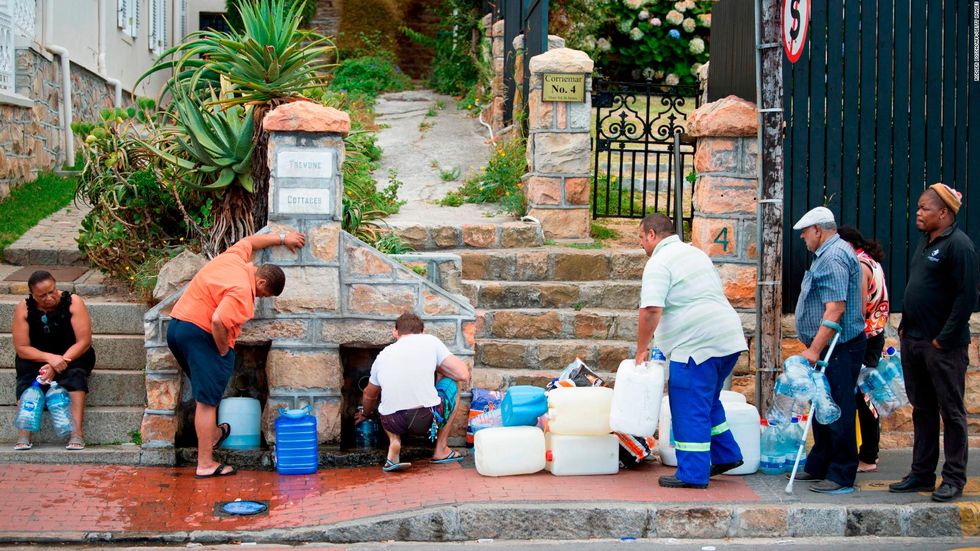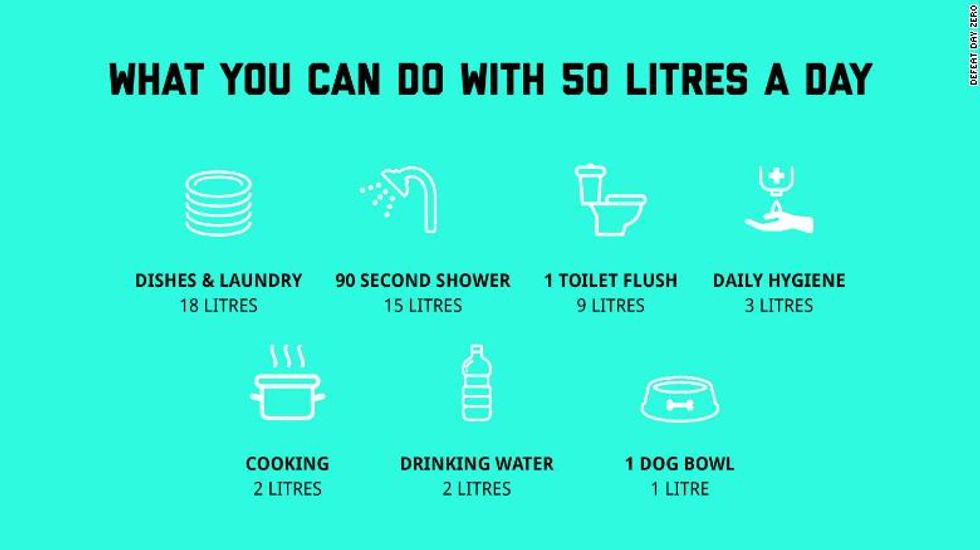It seems like this is only something that would happen in a post-apocalyptic movie, but now, it's here. One of the major cities on earth is running out of water. It seems impossible that this is actually something that can happen, but when a perfect storm hits, anything is possible.
CNN reported that there has been a high pressure system in the Atlantic Ocean, blocking storms that usually bring rain, and pushing them south away from Cape Town. This has been a constant for the last three years, and has left South Africa in a state of drought ever since. The most troubling part? Meteorologists believe based on long term climate models that this trend will continue and has the ability to reduce rainfall by 40 percent each year.
As the Theewaterskloof Dam (the reservoir that Cape Town gets its water from) continues to dry up, plans are trying to be made to ensure people have the water they need. As of now, residents have been allotted only 50 liters of water a day. This includes water for drinking, cooking, bathing, washing dishes, and flushing toilets.
The graphic above puts into perspective how far 50 liters of water can go. Imagine sharing these 50 liters with the rest of your family. Many people have cut showering to only twice a week with buckets and wash cloths. According to figures from last week, only about 55% of Capetonians are following the allotted 50 liter water usage guidelines. This puts into jeopardy just how long they'll be able to stretch their water.Luckily for the residents of Cape Town, the so-called "Day Zero" has been pushed back from mid-April until May 11. If or when "Day Zero" arrives, residents will be allotted 25 liters of water a day, and will have to go to designated water filling stations in order to get their water. There will be 200 of them spread throughout Cape Town.
Along with the guidelines for water usage, people are hurriedly trying to build desalination projects, along with aquifers and ways to recycle water. These are all in hopes that they will be able to cut down on water waste and will get themselves in a spot where they will be prepared for the next several years.
Right now, there are contingency plans in place, specifying who and what will continue to receive water during this time and also if and or when, "Day Zero" arrives. As of right now, they have decided that hospitals and schools will continue to be provided water.
This is one disaster that should prepare the rest of us in case this were to happen to other major cities in the world. Plans must be put into place in order to protect citizens and residents, and to preserve our natural resources to the best of our abilities. This is the only earth we have; we have to take care of it -- and right now, we're seeing what our actions have started to do to the climate, and the implications it may have on large populations.





 Energetic dance performance under the spotlight.
Energetic dance performance under the spotlight. Taylor Swift in a purple coat, captivating the crowd on stage.
Taylor Swift in a purple coat, captivating the crowd on stage. Taylor Swift shines on stage in a sparkling outfit and boots.
Taylor Swift shines on stage in a sparkling outfit and boots. Taylor Swift and Phoebe Bridgers sharing a joyful duet on stage.
Taylor Swift and Phoebe Bridgers sharing a joyful duet on stage.













